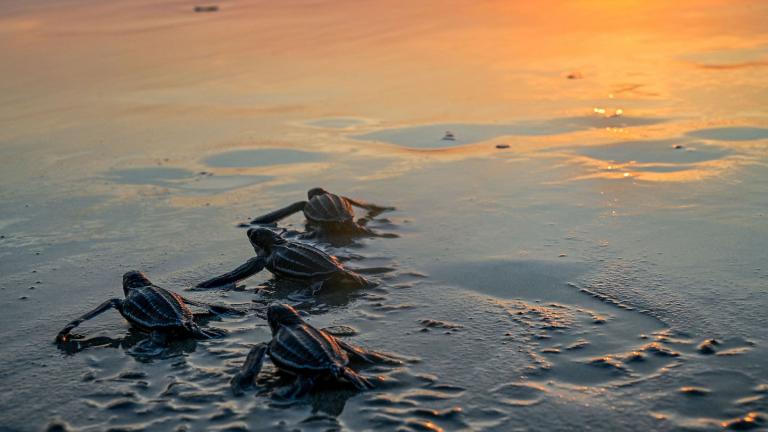In the same way that drinking salt water isn't safe for humans, fish and other aquatic life that evolved in freshwater environments suffer when streams and rivers are flooded with meltwater carrying dissolved road salt.
Just how much chloride — a key indicator of salinity — is entering Illinois' waterways during the winter is the subject of a community science monitoring study run by the Illinois RiverWatch, a program of the National Great Rivers Research and Education Center.
The study is now recruiting "winter chloride watchers" for the 2022-23 season. A pair of upcoming training sessions — set for October 26 and November 14 — will walk interested individuals through the relatively simple monitoring process. Collecting samples and testing for chloride takes less than 15 minutes, said Danelle Haake, RiverWatch director and stream ecologist.
“Our goal is to show whether cities’ efforts are working to lessen the impact of road salt entering streams as cities adopt best management practices for the application of salt onto roadways,” Haake said.
According to Haake, pristine freshwater streams typically contain less than 30 milligrams of chloride per liter (mg/l), while ocean water has around 20,000 mg/l. Illinois water quality standards consider chloride concentrations higher than 500 mg/l detrimental to aquatic life, which includes mussels, snails and damselflies.
Moderately salty water can kill the most sensitive species. Effects on other species can include a decrease in their growth rate or reduced reproductive capacity, and that in turn impacts the fish, frogs and birds dependent on the invertebrates for food. Research shows that salt levels could be responsible for less diversity in fish populations, as well.
The Illinois Department of Transportation spread half a million tons of salt on roads in 2021, according to RiverWatch, and nationally the amount is 20 million tons.
Data from 2021 shows chloride concentrations steadily increasing at most Illinois monitoring sites between January and March and then leveling off in April. Multiple samples drawn from the aptly named Salt Creek topped the 500 mg/l threshold.
The upcoming one-hour online training sessions will not only guide volunteers in site selection and monitoring methods but will also explain the problem of chloride and discuss road salt alternatives, including sand, Haake said.
Contact Patty Wetli: @pattywetli | (773) 509-5623 | [email protected]





